‹ paintings
The Cord to Alcheringa
1953
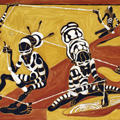 |
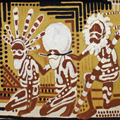 |
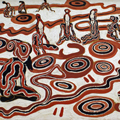 |
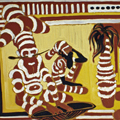 |
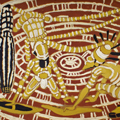 |
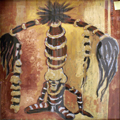 |
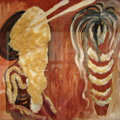 |
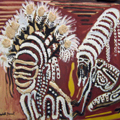 |
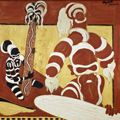 |
| next > | ||
1 to 9 of 10 artworks |
||
The Cord to Alcheringa was the first of four major series inspired by Aboriginal ritual and legend. It was followed by The Chant for Kurdaitcha (1954), Love Magic (1954) and The Legend of the Black Swan (1956). |
||
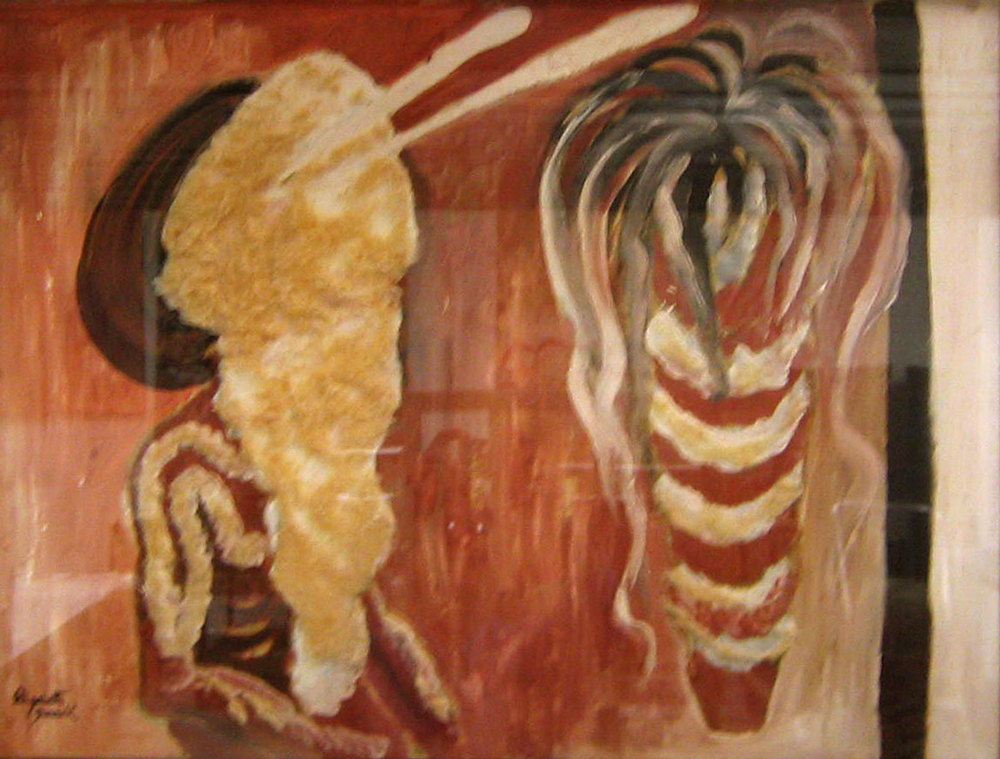
- The Cord to Alcheringa
- 1953
- earth pigments and fibre on board
- 88 x 112 cm
- University of Western Australia Art Collection
- no 7 of the sequence
- With face completely covered with emu feather down and head wrapped in a huge coil of hair string, the participant is rendered immobile. He will sit motionless during the long ceremony as guardian to the sacred totem representing a Spirit animal ancestor.